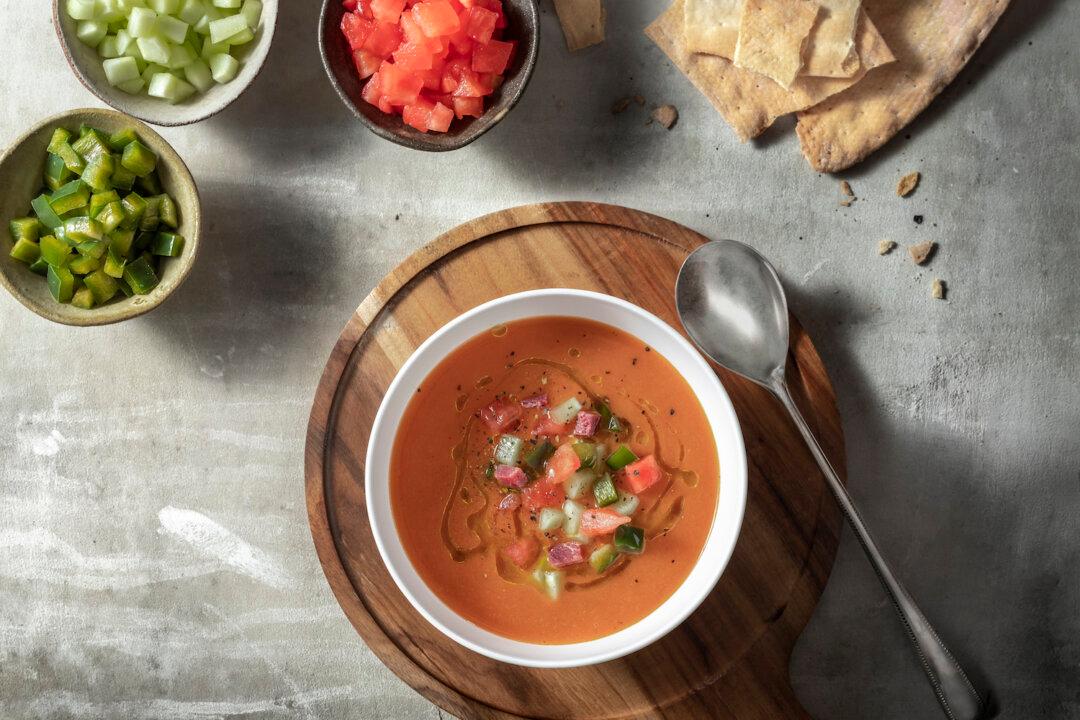Soup and hot summer weather never seemed like a good combo to me—until I met gazpacho, of course. Throw in the sudden onslaught of tomatoes from a typical summer garden and it almost becomes an imperative.
Gazpacho actually appears in texts dating back to Greece and Rome. Claims for the origin of the word itself vary, but all theories seem to indicate a reference to “pieces,” as in chunks of bread.





